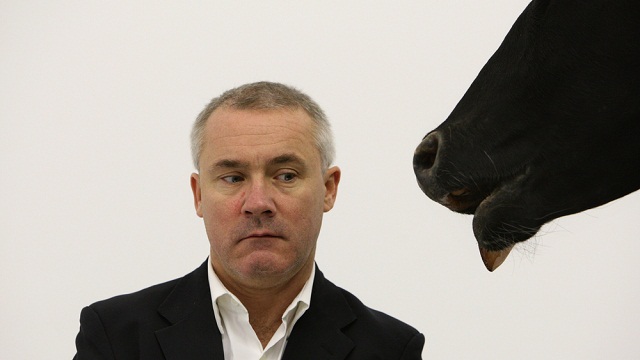For The Love of God, And Damien Hirst

Simon Schama’s piece on the relationship of objects to history in the Weekend FT reminds us of Damien Hirst’s For the Love of God. This was the artist’s outrageous/brilliant/bullshit/prescient/profitable/pathetic/gorgeous/obscene (depending) diamond-encrusted skull. Schama considers whether future historians might elect it to define our age.
Schama channels imagined thoughts of a future female historian. He writes in her voice:
So this has got to be it: the richly eloquent totem, the thing that speaks the age. But then, she wonders to herself, of what precisely does the skull speak? Is the invocation of the deity in Hirst’s title sardonic or penitential? Does the skull embody prophecy or complacency, bling or bust? Does it advertise shameless vulgarity or ascetic atonement? Was it a symptom of a generally shared morbidity among the DigiOne peoples about their own End of Time or was it a one-off, eccentric jeremiad in gems? Were the intentions of this Hirst elusive or allusive? Was he recovering archetypes of a bejewelled skull-fetish to refresh the tradition or to polish it off? Did he have in his own memory bank images of contemporary atrocities: the skull-piles of Pol Pot, or ancient Christian reliquaries? Was he, in one object, enacting some sort of sacrificial propitiation against the wrath of the money gods? Or was he ironising it? Was he perhaps thinking of that Aztec rock crystal skull in the British Museum?
How terrifying. Despite Hirst’s well-documented genius, and his most certain sense for the seductive, is there not something existentially . . . deadening in the thought that this would define our age? Isn’t excess, and irony and art only one small piece of the global puzzle?
The New York Times ran a story the week the skull went on view, in June of 2007. It is quaint to read now. The journalist, Alan Riding, understands an aspect of the Hirst phenomenon: his genius for feeling the mood of a moment. Riding also quotes another English journalist, Nick Cohen, who makes a memorable point. Here are the key graphs:
In fairness, Mr. Hirst is just playing the game. It is a game played by collectors and dealers at art fairs throughout the year; it is a game finessed as never before by Sotheby’s and Christie’s; it is a game in which, in the words of Nick Cohen, a rare British journalist to trash Mr. Hirst’s publicity coup, “the price tag is the art.”
Will the bubble burst? If it does, it will be no fault of the artists; it will be because stock markets take a dive, and collectors retrench. But it may do art itself no harm. Mr. Cohen, for one, is looking forward to the day Mr. Hirst takes a fall. Mr. Hirst “isn’t criticizing the excess, not even ironically,” Mr. Cohen wrote in The Evening Standard here, “but rolling in it and loving it. The sooner he goes out of fashion, the better.”
The bubble burst. Art continues to flourish.
Hirst’s skull (the title of which is officially is For the Love of God) may have emblematized a moment, but it will never emblematize our age. The object that emblematizes our age is a photograph: one city’s skyline filled with smoke.





